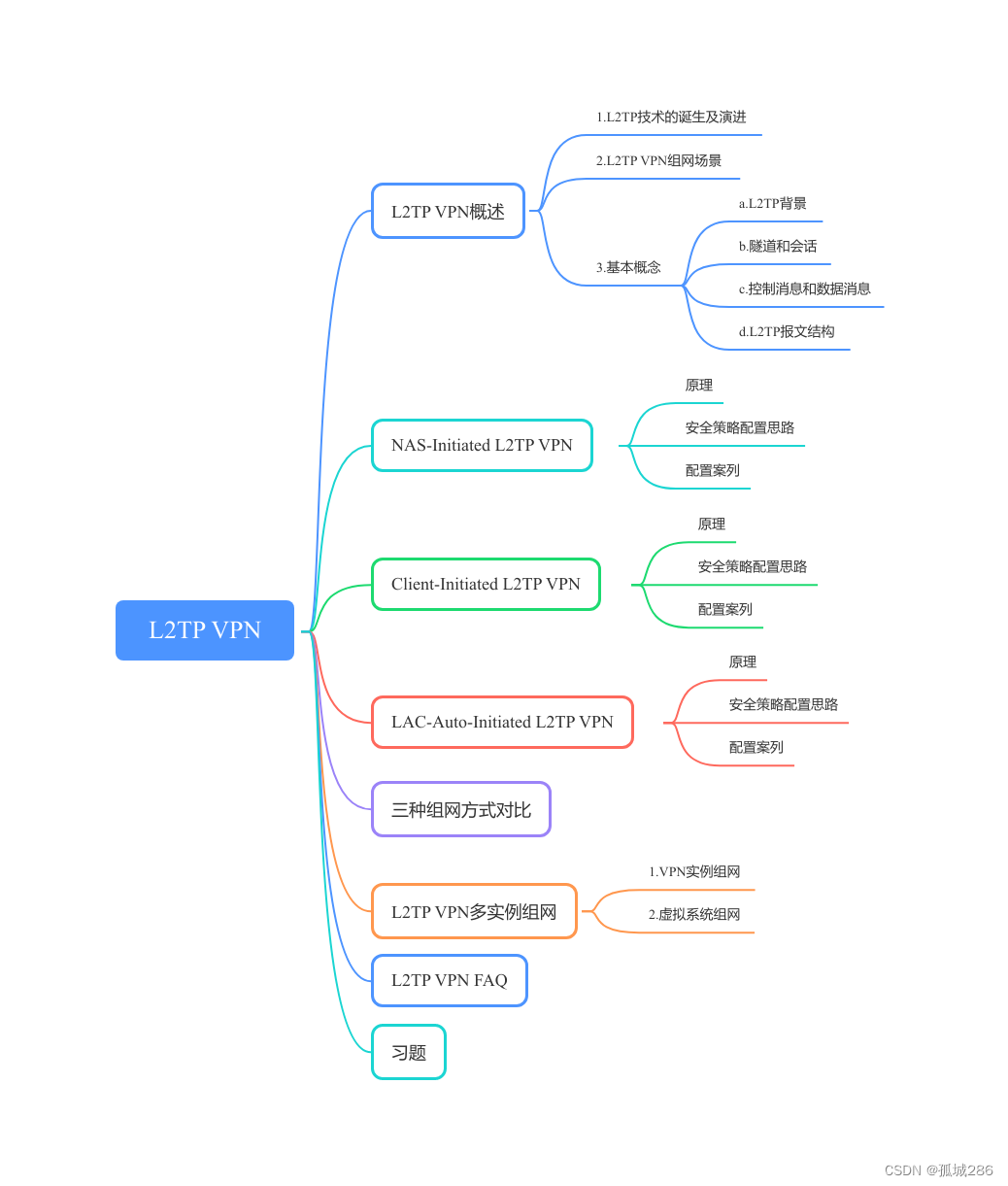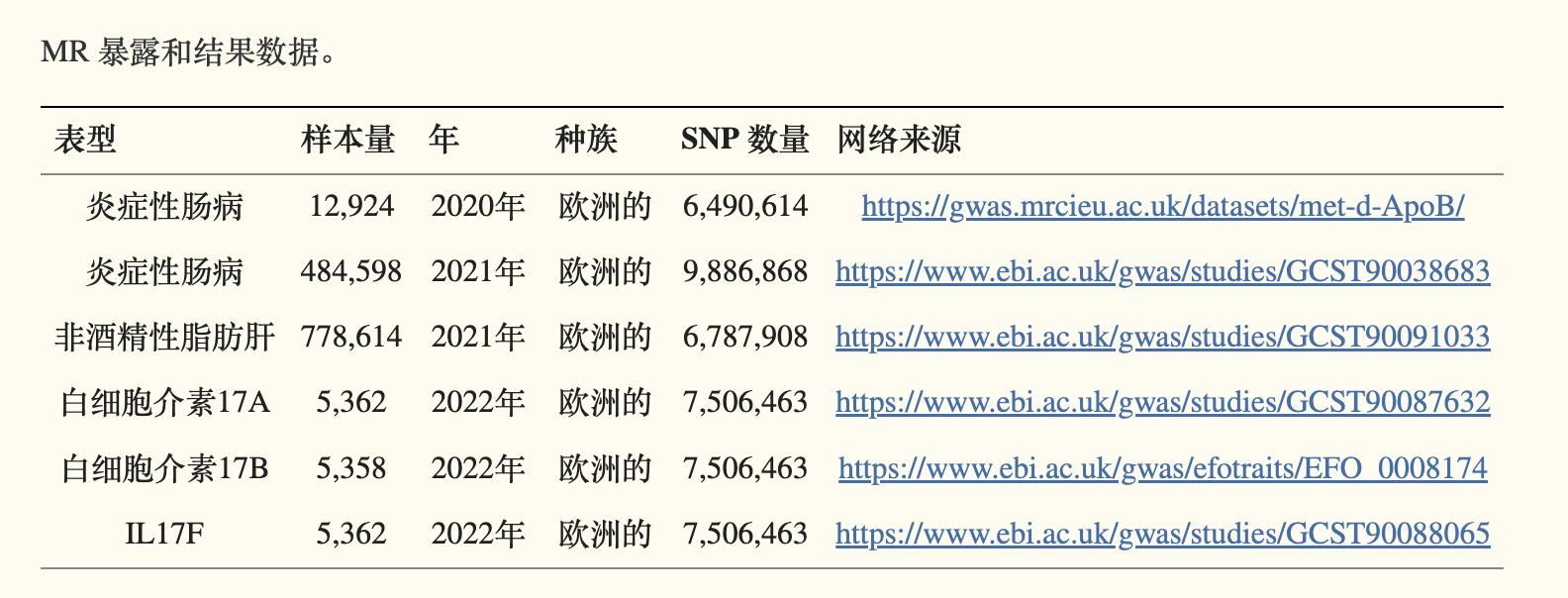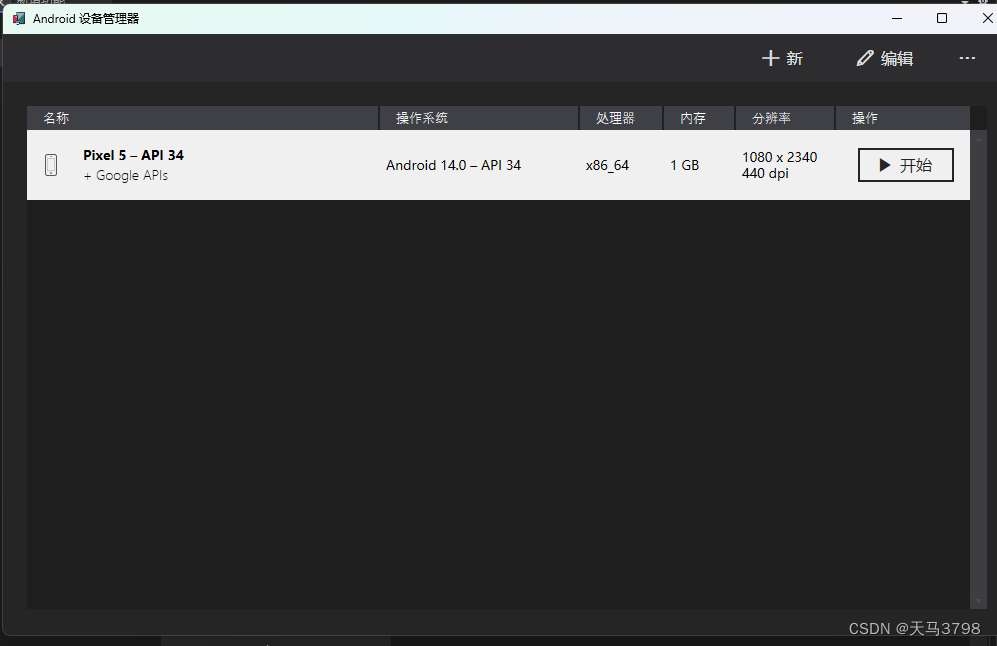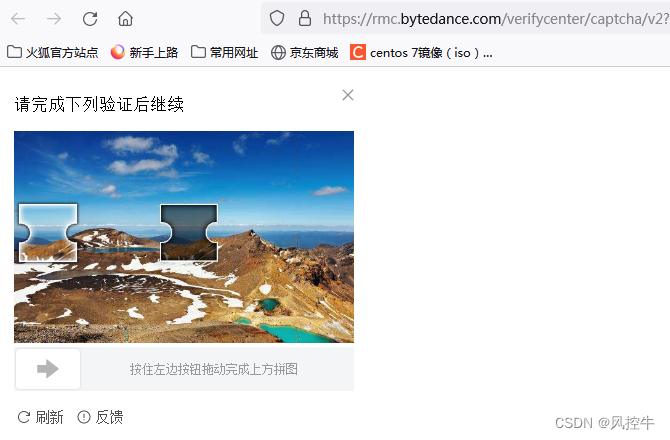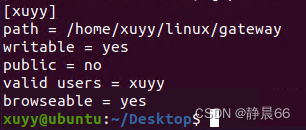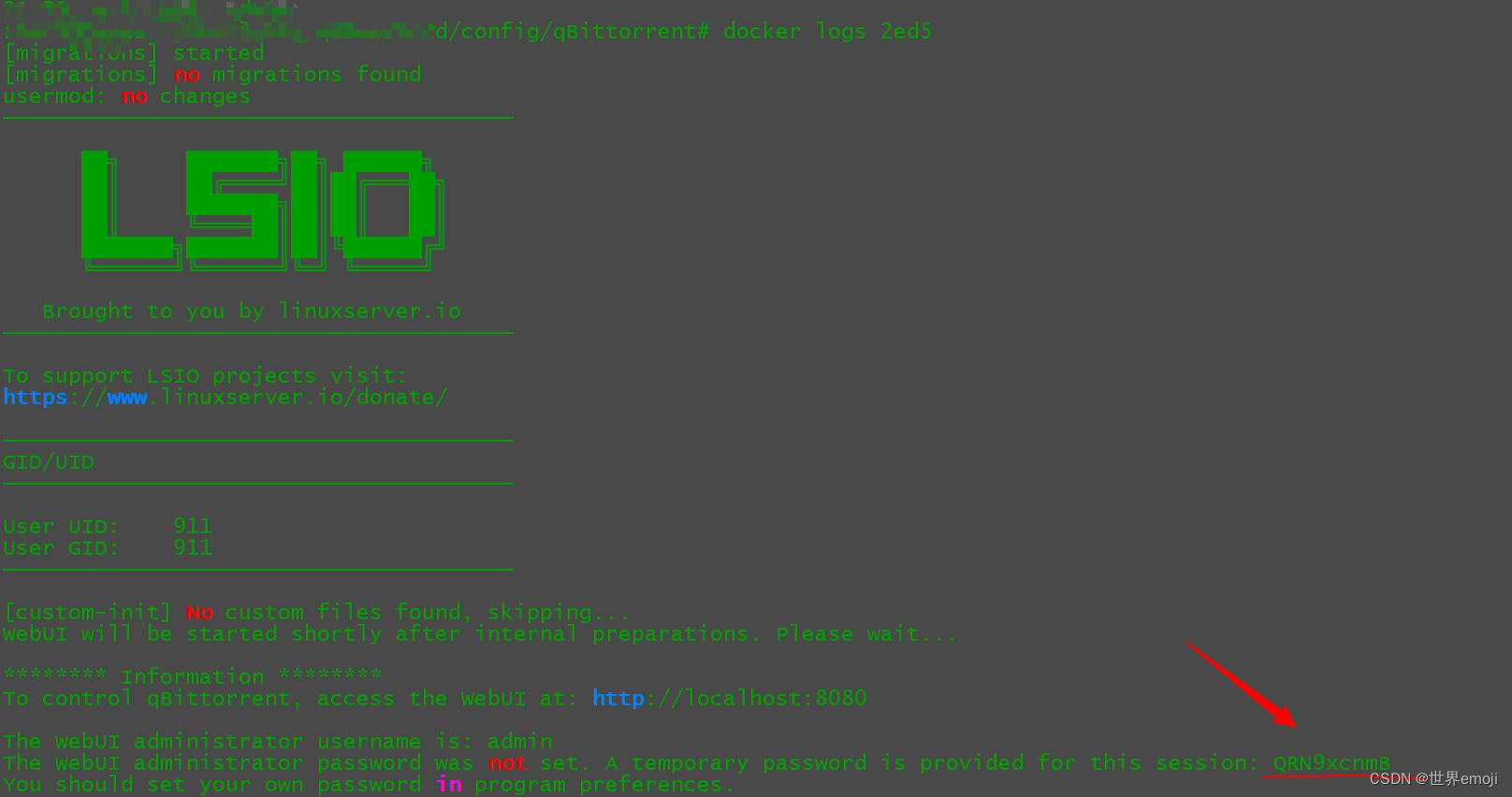目录
导言
设置和导入
超参数
加载 CIFAR10 数据集
增强层
卷积干
卷积主干
注意力汇集
Patch convnet
回调
学习率时间表
训练
推理
结论
政安晨的个人主页:政安晨
欢迎 👍点赞✍评论⭐收藏
收录专栏: TensorFlow与Keras机器学习实战
希望政安晨的博客能够对您有所裨益,如有不足之处,欢迎在评论区提出指正!
本文目标:构建补丁-通信网架构并将其注意力图谱可视化。
导言
视觉转换器(Dosovitskiy 等人)已成为卷积神经网络的有力替代品。视觉转换器以基于补丁的方式处理图像。然后将图像信息汇总为一个 CLASS 标记。该标记与特定分类决策中最重要的图像片段相关联。
CLASS 标记与补丁之间的互动可视化有助于解释分类决策。在 Touvron 等人撰写的学术论文《利用基于注意力的聚合增强卷积网络》(Augmenting convolutional networks with attention-based aggregation)中,作者提出了为卷积网络建立等效可视化的建议。
他们建议用 Transformer 层取代卷积网络的全局平均汇集层。Transformer 的自我注意力层将生成与图像中最受关注的片段相对应的注意力图,用于分类决策。
在本示例中,我们将通过基于注意力的聚合来最小化 "增强卷积网络"(Augmenting Convolutional Networks)的想法。
本示例的主要目标是涵盖以下想法,并稍作修改(以调整 CIFAR10 的实现):
—— 基于注意力的汇集层的简单设计,即明确提供不同斑块的权重(重要性)。
—— 新颖的 convnet 架构被称为 PatchConvNet,它偏离了古老的金字塔架构。
设置和导入
本示例需要 TensorFlow 附加组件,可使用以下命令安装:
pip install -U tensorflow-addonsimport math
import numpy as np
import tensorflow as tf
from tensorflow import keras
import matplotlib.pyplot as plt
import keras
from keras import layers
from keras import ops
from tensorflow import data as tf_data
# Set seed for reproducibiltiy
SEED = 42
keras.utils.set_random_seed(SEED)超参数
# DATA
BATCH_SIZE = 128
BUFFER_SIZE = BATCH_SIZE * 2
AUTO = tf_data.AUTOTUNE
INPUT_SHAPE = (32, 32, 3)
NUM_CLASSES = 10 # for CIFAR 10
# AUGMENTATION
IMAGE_SIZE = 48 # We will resize input images to this size.
# ARCHITECTURE
DIMENSIONS = 256
SE_RATIO = 8
TRUNK_DEPTH = 2
# OPTIMIZER
LEARNING_RATE = 1e-3
WEIGHT_DECAY = 1e-4
# PRETRAINING
EPOCHS = 50加载 CIFAR10 数据集
(x_train, y_train), (x_test, y_test) = keras.datasets.cifar10.load_data()
(x_train, y_train), (x_val, y_val) = (
(x_train[:40000], y_train[:40000]),
(x_train[40000:], y_train[40000:]),
)
print(f"Training samples: {len(x_train)}")
print(f"Validation samples: {len(x_val)}")
print(f"Testing samples: {len(x_test)}")
train_ds = tf_data.Dataset.from_tensor_slices((x_train, y_train))
train_ds = train_ds.shuffle(BUFFER_SIZE).batch(BATCH_SIZE).prefetch(AUTO)
val_ds = tf_data.Dataset.from_tensor_slices((x_val, y_val))
val_ds = val_ds.batch(BATCH_SIZE).prefetch(AUTO)
test_ds = tf_data.Dataset.from_tensor_slices((x_test, y_test))
test_ds = test_ds.batch(BATCH_SIZE).prefetch(AUTO)Downloading data from https://www.cs.toronto.edu/~kriz/cifar-10-python.tar.gz
170500096/170498071 [==============================] - 16s 0us/step
170508288/170498071 [==============================] - 16s 0us/step
Training samples: 40000
Validation samples: 10000
Testing samples: 10000增强层
def get_preprocessing():
model = keras.Sequential(
[
layers.Rescaling(1 / 255.0),
layers.Resizing(IMAGE_SIZE, IMAGE_SIZE),
],
name="preprocessing",
)
return model
def get_train_augmentation_model():
model = keras.Sequential(
[
layers.Rescaling(1 / 255.0),
layers.Resizing(INPUT_SHAPE[0] + 20, INPUT_SHAPE[0] + 20),
layers.RandomCrop(IMAGE_SIZE, IMAGE_SIZE),
layers.RandomFlip("horizontal"),
],
name="train_data_augmentation",
)
return model卷积干
该模型的主干是一个轻量级预处理模块,可将图像像素映射到一组向量(斑块)上。
def build_convolutional_stem(dimensions):
"""Build the convolutional stem.
Args:
dimensions: The embedding dimension of the patches (d in paper).
Returs:
The convolutional stem as a keras seqeuntial
model.
"""
config = {
"kernel_size": (3, 3),
"strides": (2, 2),
"activation": ops.gelu,
"padding": "same",
}
convolutional_stem = keras.Sequential(
[
layers.Conv2D(filters=dimensions // 2, **config),
layers.Conv2D(filters=dimensions, **config),
],
name="convolutional_stem",
)
return convolutional_stem卷积主干
模型的主干是最耗费计算资源的部分。它由 N 个堆叠的残差卷积块组成。
class SqueezeExcite(layers.Layer):
"""Applies squeeze and excitation to input feature maps as seen in
https://arxiv.org/abs/1709.01507.
Args:
ratio: The ratio with which the feature map needs to be reduced in
the reduction phase.
Inputs:
Convolutional features.
Outputs:
Attention modified feature maps.
"""
def __init__(self, ratio, **kwargs):
super().__init__(**kwargs)
self.ratio = ratio
def get_config(self):
config = super().get_config()
config.update({"ratio": self.ratio})
return config
def build(self, input_shape):
filters = input_shape[-1]
self.squeeze = layers.GlobalAveragePooling2D(keepdims=True)
self.reduction = layers.Dense(
units=filters // self.ratio,
activation="relu",
use_bias=False,
)
self.excite = layers.Dense(units=filters, activation="sigmoid", use_bias=False)
self.multiply = layers.Multiply()
def call(self, x):
shortcut = x
x = self.squeeze(x)
x = self.reduction(x)
x = self.excite(x)
x = self.multiply([shortcut, x])
return x
class Trunk(layers.Layer):
"""Convolutional residual trunk as in the https://arxiv.org/abs/2112.13692
Args:
depth: Number of trunk residual blocks
dimensions: Dimnesion of the model (denoted by d in the paper)
ratio: The Squeeze-Excitation ratio
Inputs:
Convolutional features extracted from the conv stem.
Outputs:
Flattened patches.
"""
def __init__(self, depth, dimensions, ratio, **kwargs):
super().__init__(**kwargs)
self.ratio = ratio
self.dimensions = dimensions
self.depth = depth
def get_config(self):
config = super().get_config()
config.update(
{
"ratio": self.ratio,
"dimensions": self.dimensions,
"depth": self.depth,
}
)
return config
def build(self, input_shape):
config = {
"filters": self.dimensions,
"activation": ops.gelu,
"padding": "same",
}
trunk_block = [
layers.LayerNormalization(epsilon=1e-6),
layers.Conv2D(kernel_size=(1, 1), **config),
layers.Conv2D(kernel_size=(3, 3), **config),
SqueezeExcite(ratio=self.ratio),
layers.Conv2D(kernel_size=(1, 1), filters=self.dimensions, padding="same"),
]
self.trunk_blocks = [keras.Sequential(trunk_block) for _ in range(self.depth)]
self.add = layers.Add()
self.flatten_spatial = layers.Reshape((-1, self.dimensions))
def call(self, x):
# Remember the input.
shortcut = x
for trunk_block in self.trunk_blocks:
output = trunk_block(x)
shortcut = self.add([output, shortcut])
x = shortcut
# Flatten the patches.
x = self.flatten_spatial(x)
return x
注意力汇集
卷积干路的输出会受到可训练的查询类标记的关注。由此产生的注意力图谱是图像中每个片段在分类决策中的权重。
class AttentionPooling(layers.Layer):
"""Applies attention to the patches extracted form the
trunk with the CLS token.
Args:
dimensions: The dimension of the whole architecture.
num_classes: The number of classes in the dataset.
Inputs:
Flattened patches from the trunk.
Outputs:
The modifies CLS token.
"""
def __init__(self, dimensions, num_classes, **kwargs):
super().__init__(**kwargs)
self.dimensions = dimensions
self.num_classes = num_classes
self.cls = keras.Variable(ops.zeros((1, 1, dimensions)))
def get_config(self):
config = super().get_config()
config.update(
{
"dimensions": self.dimensions,
"num_classes": self.num_classes,
"cls": self.cls.numpy(),
}
)
return config
def build(self, input_shape):
self.attention = layers.MultiHeadAttention(
num_heads=1,
key_dim=self.dimensions,
dropout=0.2,
)
self.layer_norm1 = layers.LayerNormalization(epsilon=1e-6)
self.layer_norm2 = layers.LayerNormalization(epsilon=1e-6)
self.layer_norm3 = layers.LayerNormalization(epsilon=1e-6)
self.mlp = keras.Sequential(
[
layers.Dense(units=self.dimensions, activation=ops.gelu),
layers.Dropout(0.2),
layers.Dense(units=self.dimensions, activation=ops.gelu),
]
)
self.dense = layers.Dense(units=self.num_classes)
self.flatten = layers.Flatten()
def call(self, x):
batch_size = ops.shape(x)[0]
# Expand the class token batch number of times.
class_token = ops.repeat(self.cls, repeats=batch_size, axis=0)
# Concat the input with the trainable class token.
x = ops.concatenate([class_token, x], axis=1)
# Apply attention to x.
x = self.layer_norm1(x)
x, viz_weights = self.attention(
query=x[:, 0:1], key=x, value=x, return_attention_scores=True
)
class_token = class_token + x
class_token = self.layer_norm2(class_token)
class_token = self.flatten(class_token)
class_token = self.layer_norm3(class_token)
class_token = class_token + self.mlp(class_token)
# Build the logits
logits = self.dense(class_token)
return logits, ops.squeeze(viz_weights)[..., 1:]Patch convnet
patch-convnet 如下图所示:

架构中的所有模块都在以前的文章中有提及构建。
在本文中,我们将把所有不同的模块堆叠在一起:
class PatchConvNet(keras.Model):
def __init__(
self,
stem,
trunk,
attention_pooling,
preprocessing_model,
train_augmentation_model,
**kwargs,
):
super().__init__(**kwargs)
self.stem = stem
self.trunk = trunk
self.attention_pooling = attention_pooling
self.train_augmentation_model = train_augmentation_model
self.preprocessing_model = preprocessing_model
def get_config(self):
config = super().get_config()
config.update(
{
"stem": self.stem,
"trunk": self.trunk,
"attention_pooling": self.attention_pooling,
"train_augmentation_model": self.train_augmentation_model,
"preprocessing_model": self.preprocessing_model,
}
)
return config
def _calculate_loss(self, inputs, test=False):
images, labels = inputs
# Augment the input images.
if test:
augmented_images = self.preprocessing_model(images)
else:
augmented_images = self.train_augmentation_model(images)
# Pass through the stem.
x = self.stem(augmented_images)
# Pass through the trunk.
x = self.trunk(x)
# Pass through the attention pooling block.
logits, _ = self.attention_pooling(x)
# Compute the total loss.
total_loss = self.compiled_loss(labels, logits)
return total_loss, logits
def train_step(self, inputs):
with tf.GradientTape() as tape:
total_loss, logits = self._calculate_loss(inputs)
# Apply gradients.
train_vars = [
self.stem.trainable_variables,
self.trunk.trainable_variables,
self.attention_pooling.trainable_variables,
]
grads = tape.gradient(total_loss, train_vars)
trainable_variable_list = []
for grad, var in zip(grads, train_vars):
for g, v in zip(grad, var):
trainable_variable_list.append((g, v))
self.optimizer.apply_gradients(trainable_variable_list)
# Report progress.
_, labels = inputs
self.compiled_metrics.update_state(labels, logits)
return {m.name: m.result() for m in self.metrics}
def test_step(self, inputs):
total_loss, logits = self._calculate_loss(inputs, test=True)
# Report progress.
_, labels = inputs
self.compiled_metrics.update_state(labels, logits)
return {m.name: m.result() for m in self.metrics}
def call(self, images):
# Augment the input images.
augmented_images = self.preprocessing_model(images)
# Pass through the stem.
x = self.stem(augmented_images)
# Pass through the trunk.
x = self.trunk(x)
# Pass through the attention pooling block.
logits, viz_weights = self.attention_pooling(x)
return logits, viz_weights回调
该回调将绘制图像和叠加在图像上的注意力地图。
# Taking a batch of test inputs to measure model's progress.
test_images, test_labels = next(iter(test_ds))
class TrainMonitor(keras.callbacks.Callback):
def __init__(self, epoch_interval=None):
self.epoch_interval = epoch_interval
def on_epoch_end(self, epoch, logs=None):
if self.epoch_interval and epoch % self.epoch_interval == 4:
test_augmented_images = self.model.preprocessing_model(test_images)
# Pass through the stem.
test_x = self.model.stem(test_augmented_images)
# Pass through the trunk.
test_x = self.model.trunk(test_x)
# Pass through the attention pooling block.
_, test_viz_weights = self.model.attention_pooling(test_x)
# Reshape the vizualization weights
num_patches = ops.shape(test_viz_weights)[-1]
height = width = int(math.sqrt(num_patches))
test_viz_weights = layers.Reshape((height, width))(test_viz_weights)
# Take a random image and its attention weights.
index = np.random.randint(low=0, high=ops.shape(test_augmented_images)[0])
selected_image = test_augmented_images[index]
selected_weight = test_viz_weights[index]
# Plot the images and the overlayed attention map.
fig, ax = plt.subplots(nrows=1, ncols=2, figsize=(10, 5))
ax[0].imshow(selected_image)
ax[0].set_title(f"Original: {epoch:03d}")
ax[0].axis("off")
img = ax[1].imshow(selected_image)
ax[1].imshow(
selected_weight, cmap="inferno", alpha=0.6, extent=img.get_extent()
)
ax[1].set_title(f"Attended: {epoch:03d}")
ax[1].axis("off")
plt.axis("off")
plt.show()
plt.close()学习率时间表
class WarmUpCosine(keras.optimizers.schedules.LearningRateSchedule):
def __init__(
self, learning_rate_base, total_steps, warmup_learning_rate, warmup_steps
):
super().__init__()
self.learning_rate_base = learning_rate_base
self.total_steps = total_steps
self.warmup_learning_rate = warmup_learning_rate
self.warmup_steps = warmup_steps
self.pi = np.pi
def __call__(self, step):
if self.total_steps < self.warmup_steps:
raise ValueError("Total_steps must be larger or equal to warmup_steps.")
cos_annealed_lr = ops.cos(
self.pi
* (ops.cast(step, "float32") - self.warmup_steps)
/ float(self.total_steps - self.warmup_steps)
)
learning_rate = 0.5 * self.learning_rate_base * (1 + cos_annealed_lr)
if self.warmup_steps > 0:
if self.learning_rate_base < self.warmup_learning_rate:
raise ValueError(
"Learning_rate_base must be larger or equal to "
"warmup_learning_rate."
)
slope = (
self.learning_rate_base - self.warmup_learning_rate
) / self.warmup_steps
warmup_rate = slope * ops.cast(step, "float32") + self.warmup_learning_rate
learning_rate = ops.where(
step < self.warmup_steps, warmup_rate, learning_rate
)
return ops.where(
step > self.total_steps,
0.0,
learning_rate,
)
total_steps = int((len(x_train) / BATCH_SIZE) * EPOCHS)
warmup_epoch_percentage = 0.15
warmup_steps = int(total_steps * warmup_epoch_percentage)
scheduled_lrs = WarmUpCosine(
learning_rate_base=LEARNING_RATE,
total_steps=total_steps,
warmup_learning_rate=0.0,
warmup_steps=warmup_steps,
)训练
我们建立模型,对其进行编译和训练。
train_augmentation_model = get_train_augmentation_model()
preprocessing_model = get_preprocessing()
conv_stem = build_convolutional_stem(dimensions=DIMENSIONS)
conv_trunk = Trunk(depth=TRUNK_DEPTH, dimensions=DIMENSIONS, ratio=SE_RATIO)
attention_pooling = AttentionPooling(dimensions=DIMENSIONS, num_classes=NUM_CLASSES)
patch_conv_net = PatchConvNet(
stem=conv_stem,
trunk=conv_trunk,
attention_pooling=attention_pooling,
train_augmentation_model=train_augmentation_model,
preprocessing_model=preprocessing_model,
)
# Assemble the callbacks.
train_callbacks = [TrainMonitor(epoch_interval=5)]
# Get the optimizer.
optimizer = keras.optimizers.AdamW(
learning_rate=scheduled_lrs, weight_decay=WEIGHT_DECAY
)
# Compile and pretrain the model.
patch_conv_net.compile(
optimizer=optimizer,
loss=keras.losses.SparseCategoricalCrossentropy(from_logits=True),
metrics=[
keras.metrics.SparseCategoricalAccuracy(name="accuracy"),
keras.metrics.SparseTopKCategoricalAccuracy(5, name="top-5-accuracy"),
],
)
history = patch_conv_net.fit(
train_ds,
epochs=EPOCHS,
validation_data=val_ds,
callbacks=train_callbacks,
)
# Evaluate the model with the test dataset.
loss, acc_top1, acc_top5 = patch_conv_net.evaluate(test_ds)
print(f"Loss: {loss:0.2f}")
print(f"Top 1 test accuracy: {acc_top1*100:0.2f}%")
print(f"Top 5 test accuracy: {acc_top5*100:0.2f}%")Epoch 1/50
313/313 [==============================] - 14s 27ms/step - loss: 1.9639 - accuracy: 0.2635 - top-5-accuracy: 0.7792 - val_loss: 1.7219 - val_accuracy: 0.3778 - val_top-5-accuracy: 0.8514
Epoch 2/50
313/313 [==============================] - 8s 26ms/step - loss: 1.5475 - accuracy: 0.4214 - top-5-accuracy: 0.9099 - val_loss: 1.4351 - val_accuracy: 0.4592 - val_top-5-accuracy: 0.9298
Epoch 3/50
313/313 [==============================] - 8s 25ms/step - loss: 1.3328 - accuracy: 0.5135 - top-5-accuracy: 0.9368 - val_loss: 1.3763 - val_accuracy: 0.5077 - val_top-5-accuracy: 0.9268
Epoch 4/50
313/313 [==============================] - 8s 25ms/step - loss: 1.1653 - accuracy: 0.5807 - top-5-accuracy: 0.9554 - val_loss: 1.0892 - val_accuracy: 0.6146 - val_top-5-accuracy: 0.9560
Epoch 5/50
313/313 [==============================] - ETA: 0s - loss: 1.0235 - accuracy: 0.6345 - top-5-accuracy: 0.9660
313/313 [==============================] - 8s 25ms/step - loss: 1.0235 - accuracy: 0.6345 - top-5-accuracy: 0.9660 - val_loss: 1.0085 - val_accuracy: 0.6424 - val_top-5-accuracy: 0.9640
Epoch 6/50
313/313 [==============================] - 8s 25ms/step - loss: 0.9190 - accuracy: 0.6729 - top-5-accuracy: 0.9741 - val_loss: 0.9066 - val_accuracy: 0.6850 - val_top-5-accuracy: 0.9751
Epoch 7/50
313/313 [==============================] - 8s 25ms/step - loss: 0.8331 - accuracy: 0.7056 - top-5-accuracy: 0.9783 - val_loss: 0.8844 - val_accuracy: 0.6903 - val_top-5-accuracy: 0.9779
Epoch 8/50
313/313 [==============================] - 8s 25ms/step - loss: 0.7526 - accuracy: 0.7376 - top-5-accuracy: 0.9823 - val_loss: 0.8200 - val_accuracy: 0.7114 - val_top-5-accuracy: 0.9793
Epoch 9/50
313/313 [==============================] - 8s 25ms/step - loss: 0.6853 - accuracy: 0.7636 - top-5-accuracy: 0.9856 - val_loss: 0.7216 - val_accuracy: 0.7584 - val_top-5-accuracy: 0.9823
Epoch 10/50
313/313 [==============================] - ETA: 0s - loss: 0.6260 - accuracy: 0.7849 - top-5-accuracy: 0.9877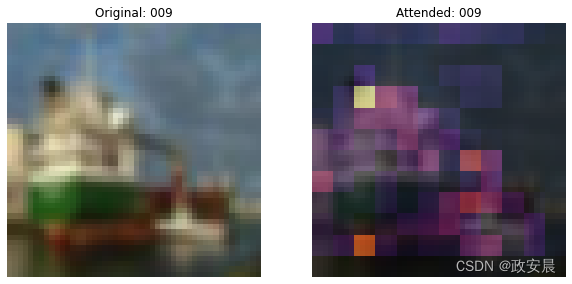
313/313 [==============================] - 8s 25ms/step - loss: 0.6260 - accuracy: 0.7849 - top-5-accuracy: 0.9877 - val_loss: 0.6985 - val_accuracy: 0.7624 - val_top-5-accuracy: 0.9847
Epoch 11/50
313/313 [==============================] - 8s 25ms/step - loss: 0.5877 - accuracy: 0.7978 - top-5-accuracy: 0.9897 - val_loss: 0.7357 - val_accuracy: 0.7595 - val_top-5-accuracy: 0.9816
Epoch 12/50
313/313 [==============================] - 8s 25ms/step - loss: 0.5615 - accuracy: 0.8066 - top-5-accuracy: 0.9905 - val_loss: 0.6554 - val_accuracy: 0.7806 - val_top-5-accuracy: 0.9841
Epoch 13/50
313/313 [==============================] - 8s 25ms/step - loss: 0.5287 - accuracy: 0.8174 - top-5-accuracy: 0.9915 - val_loss: 0.5867 - val_accuracy: 0.8051 - val_top-5-accuracy: 0.9869
Epoch 14/50
313/313 [==============================] - 8s 25ms/step - loss: 0.4976 - accuracy: 0.8286 - top-5-accuracy: 0.9921 - val_loss: 0.5707 - val_accuracy: 0.8047 - val_top-5-accuracy: 0.9899
Epoch 15/50
313/313 [==============================] - ETA: 0s - loss: 0.4735 - accuracy: 0.8348 - top-5-accuracy: 0.9939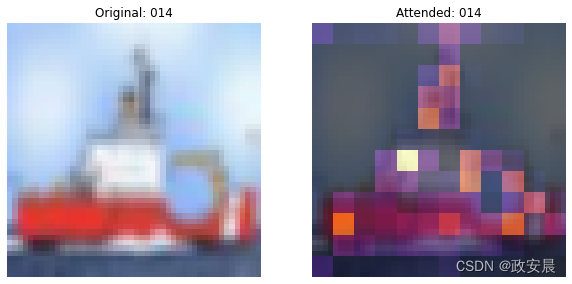
313/313 [==============================] - 8s 25ms/step - loss: 0.4735 - accuracy: 0.8348 - top-5-accuracy: 0.9939 - val_loss: 0.5945 - val_accuracy: 0.8040 - val_top-5-accuracy: 0.9883
Epoch 16/50
313/313 [==============================] - 8s 25ms/step - loss: 0.4660 - accuracy: 0.8364 - top-5-accuracy: 0.9936 - val_loss: 0.5629 - val_accuracy: 0.8125 - val_top-5-accuracy: 0.9906
Epoch 17/50
313/313 [==============================] - 8s 25ms/step - loss: 0.4416 - accuracy: 0.8462 - top-5-accuracy: 0.9946 - val_loss: 0.5747 - val_accuracy: 0.8013 - val_top-5-accuracy: 0.9888
Epoch 18/50
313/313 [==============================] - 8s 25ms/step - loss: 0.4175 - accuracy: 0.8560 - top-5-accuracy: 0.9949 - val_loss: 0.5672 - val_accuracy: 0.8088 - val_top-5-accuracy: 0.9903
Epoch 19/50
313/313 [==============================] - 8s 25ms/step - loss: 0.3912 - accuracy: 0.8650 - top-5-accuracy: 0.9957 - val_loss: 0.5454 - val_accuracy: 0.8136 - val_top-5-accuracy: 0.9907
Epoch 20/50
311/313 [============================>.] - ETA: 0s - loss: 0.3800 - accuracy: 0.8676 - top-5-accuracy: 0.9956
313/313 [==============================] - 8s 25ms/step - loss: 0.3801 - accuracy: 0.8676 - top-5-accuracy: 0.9956 - val_loss: 0.5274 - val_accuracy: 0.8222 - val_top-5-accuracy: 0.9915
Epoch 21/50
313/313 [==============================] - 8s 25ms/step - loss: 0.3641 - accuracy: 0.8734 - top-5-accuracy: 0.9962 - val_loss: 0.5032 - val_accuracy: 0.8315 - val_top-5-accuracy: 0.9921
Epoch 22/50
313/313 [==============================] - 8s 25ms/step - loss: 0.3474 - accuracy: 0.8805 - top-5-accuracy: 0.9970 - val_loss: 0.5251 - val_accuracy: 0.8302 - val_top-5-accuracy: 0.9917
Epoch 23/50
313/313 [==============================] - 8s 25ms/step - loss: 0.3327 - accuracy: 0.8833 - top-5-accuracy: 0.9976 - val_loss: 0.5158 - val_accuracy: 0.8321 - val_top-5-accuracy: 0.9903
Epoch 24/50
313/313 [==============================] - 8s 25ms/step - loss: 0.3158 - accuracy: 0.8897 - top-5-accuracy: 0.9977 - val_loss: 0.5098 - val_accuracy: 0.8355 - val_top-5-accuracy: 0.9912
Epoch 25/50
312/313 [============================>.] - ETA: 0s - loss: 0.2985 - accuracy: 0.8976 - top-5-accuracy: 0.9976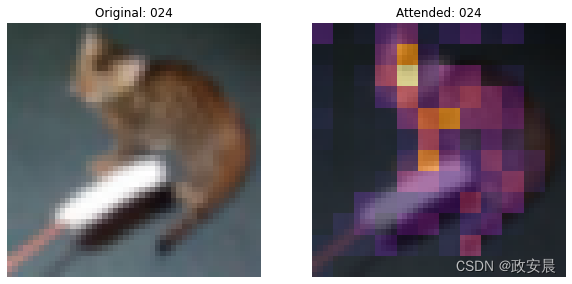
313/313 [==============================] - 8s 25ms/step - loss: 0.2986 - accuracy: 0.8976 - top-5-accuracy: 0.9976 - val_loss: 0.5302 - val_accuracy: 0.8276 - val_top-5-accuracy: 0.9922
Epoch 26/50
313/313 [==============================] - 8s 25ms/step - loss: 0.2819 - accuracy: 0.9021 - top-5-accuracy: 0.9977 - val_loss: 0.5130 - val_accuracy: 0.8358 - val_top-5-accuracy: 0.9923
Epoch 27/50
313/313 [==============================] - 8s 25ms/step - loss: 0.2696 - accuracy: 0.9065 - top-5-accuracy: 0.9983 - val_loss: 0.5096 - val_accuracy: 0.8389 - val_top-5-accuracy: 0.9926
Epoch 28/50
313/313 [==============================] - 8s 25ms/step - loss: 0.2526 - accuracy: 0.9115 - top-5-accuracy: 0.9983 - val_loss: 0.4988 - val_accuracy: 0.8403 - val_top-5-accuracy: 0.9921
Epoch 29/50
313/313 [==============================] - 8s 25ms/step - loss: 0.2322 - accuracy: 0.9190 - top-5-accuracy: 0.9987 - val_loss: 0.5234 - val_accuracy: 0.8395 - val_top-5-accuracy: 0.9915
Epoch 30/50
313/313 [==============================] - ETA: 0s - loss: 0.2180 - accuracy: 0.9235 - top-5-accuracy: 0.9988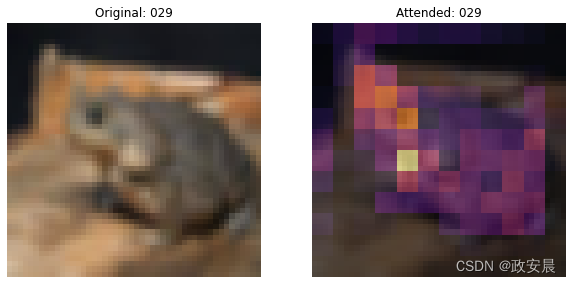
313/313 [==============================] - 8s 26ms/step - loss: 0.2180 - accuracy: 0.9235 - top-5-accuracy: 0.9988 - val_loss: 0.5175 - val_accuracy: 0.8407 - val_top-5-accuracy: 0.9925
Epoch 31/50
313/313 [==============================] - 8s 25ms/step - loss: 0.2108 - accuracy: 0.9267 - top-5-accuracy: 0.9990 - val_loss: 0.5046 - val_accuracy: 0.8476 - val_top-5-accuracy: 0.9937
Epoch 32/50
313/313 [==============================] - 8s 25ms/step - loss: 0.1929 - accuracy: 0.9337 - top-5-accuracy: 0.9991 - val_loss: 0.5096 - val_accuracy: 0.8516 - val_top-5-accuracy: 0.9914
Epoch 33/50
313/313 [==============================] - 8s 25ms/step - loss: 0.1787 - accuracy: 0.9370 - top-5-accuracy: 0.9992 - val_loss: 0.4963 - val_accuracy: 0.8541 - val_top-5-accuracy: 0.9917
Epoch 34/50
313/313 [==============================] - 8s 25ms/step - loss: 0.1653 - accuracy: 0.9428 - top-5-accuracy: 0.9994 - val_loss: 0.5092 - val_accuracy: 0.8547 - val_top-5-accuracy: 0.9921
Epoch 35/50
313/313 [==============================] - ETA: 0s - loss: 0.1544 - accuracy: 0.9464 - top-5-accuracy: 0.9995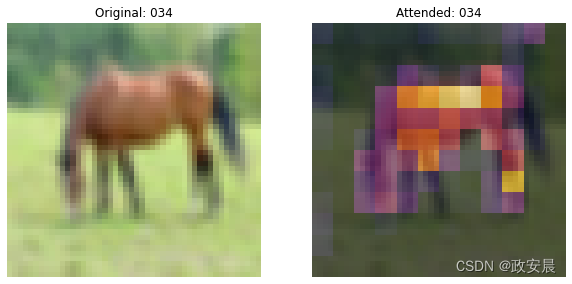
313/313 [==============================] - 7s 24ms/step - loss: 0.1544 - accuracy: 0.9464 - top-5-accuracy: 0.9995 - val_loss: 0.5137 - val_accuracy: 0.8513 - val_top-5-accuracy: 0.9928
Epoch 36/50
313/313 [==============================] - 8s 25ms/step - loss: 0.1418 - accuracy: 0.9507 - top-5-accuracy: 0.9997 - val_loss: 0.5267 - val_accuracy: 0.8560 - val_top-5-accuracy: 0.9913
Epoch 37/50
313/313 [==============================] - 8s 25ms/step - loss: 0.1259 - accuracy: 0.9561 - top-5-accuracy: 0.9997 - val_loss: 0.5283 - val_accuracy: 0.8584 - val_top-5-accuracy: 0.9923
Epoch 38/50
313/313 [==============================] - 8s 25ms/step - loss: 0.1166 - accuracy: 0.9599 - top-5-accuracy: 0.9997 - val_loss: 0.5541 - val_accuracy: 0.8549 - val_top-5-accuracy: 0.9919
Epoch 39/50
313/313 [==============================] - 8s 25ms/step - loss: 0.1111 - accuracy: 0.9624 - top-5-accuracy: 0.9997 - val_loss: 0.5543 - val_accuracy: 0.8575 - val_top-5-accuracy: 0.9917
Epoch 40/50
312/313 [============================>.] - ETA: 0s - loss: 0.1017 - accuracy: 0.9653 - top-5-accuracy: 0.9997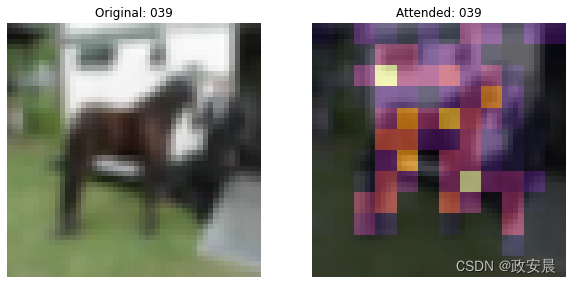
313/313 [==============================] - 8s 25ms/step - loss: 0.1016 - accuracy: 0.9653 - top-5-accuracy: 0.9997 - val_loss: 0.5357 - val_accuracy: 0.8614 - val_top-5-accuracy: 0.9923
Epoch 41/50
313/313 [==============================] - 8s 25ms/step - loss: 0.0925 - accuracy: 0.9687 - top-5-accuracy: 0.9998 - val_loss: 0.5248 - val_accuracy: 0.8615 - val_top-5-accuracy: 0.9924
Epoch 42/50
313/313 [==============================] - 8s 25ms/step - loss: 0.0848 - accuracy: 0.9726 - top-5-accuracy: 0.9997 - val_loss: 0.5182 - val_accuracy: 0.8654 - val_top-5-accuracy: 0.9939
Epoch 43/50
313/313 [==============================] - 8s 25ms/step - loss: 0.0823 - accuracy: 0.9724 - top-5-accuracy: 0.9999 - val_loss: 0.5010 - val_accuracy: 0.8679 - val_top-5-accuracy: 0.9931
Epoch 44/50
313/313 [==============================] - 8s 25ms/step - loss: 0.0762 - accuracy: 0.9752 - top-5-accuracy: 0.9998 - val_loss: 0.5088 - val_accuracy: 0.8686 - val_top-5-accuracy: 0.9939
Epoch 45/50
312/313 [============================>.] - ETA: 0s - loss: 0.0752 - accuracy: 0.9763 - top-5-accuracy: 0.9999
313/313 [==============================] - 8s 26ms/step - loss: 0.0752 - accuracy: 0.9764 - top-5-accuracy: 0.9999 - val_loss: 0.4844 - val_accuracy: 0.8679 - val_top-5-accuracy: 0.9938
Epoch 46/50
313/313 [==============================] - 8s 25ms/step - loss: 0.0789 - accuracy: 0.9745 - top-5-accuracy: 0.9997 - val_loss: 0.4774 - val_accuracy: 0.8702 - val_top-5-accuracy: 0.9937
Epoch 47/50
313/313 [==============================] - 8s 25ms/step - loss: 0.0866 - accuracy: 0.9726 - top-5-accuracy: 0.9998 - val_loss: 0.4644 - val_accuracy: 0.8666 - val_top-5-accuracy: 0.9936
Epoch 48/50
313/313 [==============================] - 8s 25ms/step - loss: 0.1000 - accuracy: 0.9697 - top-5-accuracy: 0.9999 - val_loss: 0.4471 - val_accuracy: 0.8636 - val_top-5-accuracy: 0.9933
Epoch 49/50
313/313 [==============================] - 8s 25ms/step - loss: 0.1315 - accuracy: 0.9592 - top-5-accuracy: 0.9997 - val_loss: 0.4411 - val_accuracy: 0.8603 - val_top-5-accuracy: 0.9926
Epoch 50/50
313/313 [==============================] - ETA: 0s - loss: 0.1828 - accuracy: 0.9447 - top-5-accuracy: 0.9995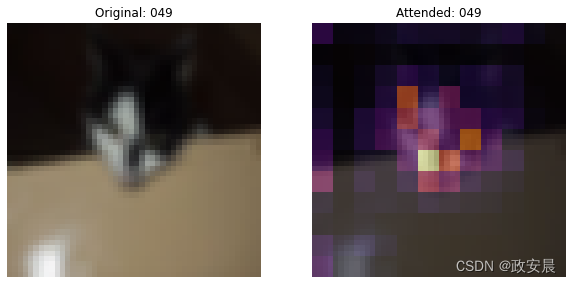
313/313 [==============================] - 8s 25ms/step - loss: 0.1828 - accuracy: 0.9447 - top-5-accuracy: 0.9995 - val_loss: 0.4614 - val_accuracy: 0.8480 - val_top-5-accuracy: 0.9920
79/79 [==============================] - 1s 8ms/step - loss: 0.4696 - accuracy: 0.8459 - top-5-accuracy: 0.9921
Loss: 0.47
Top 1 test accuracy: 84.59%
Top 5 test accuracy: 99.21%推理
在这里,我们使用训练有素的模型来绘制注意力地图。
def plot_attention(image):
"""Plots the attention map on top of the image.
Args:
image: A numpy image of arbitrary size.
"""
# Resize the image to a (32, 32) dim.
image = ops.image.resize(image, (32, 32))
image = image[np.newaxis, ...]
test_augmented_images = patch_conv_net.preprocessing_model(image)
# Pass through the stem.
test_x = patch_conv_net.stem(test_augmented_images)
# Pass through the trunk.
test_x = patch_conv_net.trunk(test_x)
# Pass through the attention pooling block.
_, test_viz_weights = patch_conv_net.attention_pooling(test_x)
test_viz_weights = test_viz_weights[np.newaxis, ...]
# Reshape the vizualization weights.
num_patches = ops.shape(test_viz_weights)[-1]
height = width = int(math.sqrt(num_patches))
test_viz_weights = layers.Reshape((height, width))(test_viz_weights)
selected_image = test_augmented_images[0]
selected_weight = test_viz_weights[0]
# Plot the images.
fig, ax = plt.subplots(nrows=1, ncols=2, figsize=(10, 5))
ax[0].imshow(selected_image)
ax[0].set_title(f"Original")
ax[0].axis("off")
img = ax[1].imshow(selected_image)
ax[1].imshow(selected_weight, cmap="inferno", alpha=0.6, extent=img.get_extent())
ax[1].set_title(f"Attended")
ax[1].axis("off")
plt.axis("off")
plt.show()
plt.close()
url = "http://farm9.staticflickr.com/8017/7140384795_385b1f48df_z.jpg"
image_name = keras.utils.get_file(fname="image.jpg", origin=url)
image = keras.utils.load_img(image_name)
image = keras.utils.img_to_array(image)
plot_attention(image)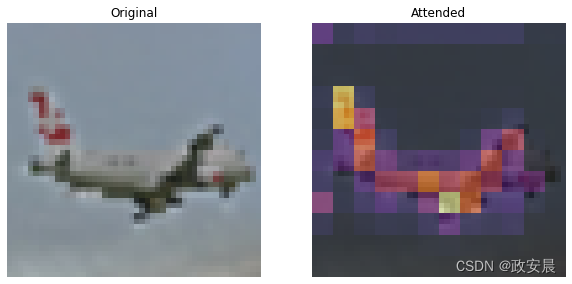
结论
与可训练 CLASS 标记和图像斑块相对应的注意力图谱有助于解释分类决策。我们还应该注意到,注意力图谱会逐渐变得更好。在训练初期,注意力分散在四周,而到了后期,注意力则更多地集中在图像中的物体上。
非锥体网络的测试准确率达到了约 84-85%。


